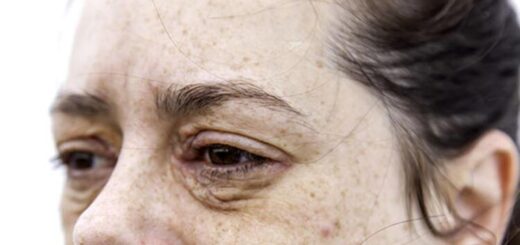What is Hair Follicle Inflammation (Folliculitis)? How to Pass?
The skin effectively protects against microorganisms. However, the hair follicles (Follicles) where the hairs are located are the sensitive points of the skin where it is vulnerable to microorganisms. These parts are a gateway for bacteria. Hair follicle inflammation (Folliculitis), one of the common skin lesions, is caused by bacteria. Folliculitis, an inflammation of the hair follicle, can occur anywhere on the body where there is hair. Folliculitis, which usually heals on its own, can be easily controlled with simple precautions and treatment.
What is Hair Follicle Inflammation (Folliculitis)?
Hair follicle inflammation (Folliculitis) is a common skin condition that occurs with inflammation of the hair follicle. It is usually caused by a bacterial or fungal infection. Folliculitis can occur anywhere on the body except the palms, soles, lips and mucous membranes. It is seen mostly on the scalp. Folliculitis, which appear as small red bumps of 2-5 mm in size or as pustule-shaped, papule-shaped pimples with a white center, are not life-threatening. However, itching and pain can make the person extremely uncomfortable. Uncontrolled, recurring and spreading infections can turn into wounds.
What are the Types of Folliculitis?
Folliculitis is divided into two main types: superficial and deep folliculitis. Superficial type folliculitis involves part of the follicle, is easily treatable and less severe. Deep type folliculitis covers the entire follicle and requires long-term treatment. Superficial folliculitis types can be listed as follows:
- Bacterial Folliculitis: It is the most common type of folliculitis. It is characterized by itching, redness, pus. It usually occurs when hair follicles become infected with the Staphylococcus aureus type of bacteria.
- Hot Tub Folliculitis: (Pseudomonas Folliculitis): This type of folliculitis is caused by Pseudomonas bacteria found in pools and hot tubs where temperature, chlorine and Ph levels are not well regulated. Red circular itching and swelling appear 2-3 days after exposure to bacteria.
- Razor Bumps (Pseudofolliculitis Barbae): It is a type of folliculitis that occurs due to ingrown hairs. It is usually seen in men with curly hair. Significant itching and redness occur. Dark scars (Keloids) may occur in this type of folliculitis. Hair follicle inflammation in the genital area, hair follicle inflammation in the vagina, armpit hair follicle inflammation, hair follicle inflammation in the leg, hair follicle inflammation in the groin usually occurs due to razor bumps.
- Pityrosporum Folliculitis: This type of folliculitis is usually caused by a yeast infection. It is more common in men than in women. Red itchy pustules are observed on the back, chest, shoulders, neck and arms.
Some of the deep folliculitis forms are:
- Sycosis Barbae: This type of folliculitis affects men who have started shaving. Facial hair follicle inflammation and beard hair follicle inflammation usually occur due to this type.
- Gram Negative Folliculitis (GNF): This is the type of folliculitis that is usually seen in people who receive long-term antibiotic treatment for acne.
- Furuncles and Carbuncles: Occur when hair follicles are deeply infected with Staph bacteria. A painful, pink lump is observed in the lesion area.
- Eosinophilic Folliculitis (Ofuji Disease): This type of folliculitis occurs in people with diseases that weaken the immune system, such as cancer and AIDS. An itchy and swollen appearance occurs in the upper part of the face and body.
What are the symptoms of hair follicle inflammation?
Hair follicle inflammation (Folliculitis) can be seen anywhere on the body that has hair, such as the scalp. An inflamed red lump appears on the hair follicles. Folliculitis, which appears as a small pink or red rash on the skin, can also cause acne. In rare cases, some microorganisms may enter the blood. In this case, fever and fatigue occur.
What Causes Hair Follicle Inflammation?
Hair follicle inflammation (Folliculitis) is a bacterial infection. Folliculitis is most often caused by microorganisms called Staphylococcus bacteria. Various yeasts, fungi and parasites can also cause folliculitis. Some causes of hair follicle inflammation that cause folliculitis are:
- Long-term use of cortisone drugs or creams,
- Chemical or physical products preferred for epilation and waxing that cause irritation,
- excessive sweating,
- Clothes made from fabrics that are tight, hard and irritating to the skin,
- Some cosmetic products,
- leather care products,
- Chronic skin diseases such as eczema and psoriasis,
- Some diseases that weaken the immune system (such as diabetes, cancer, AIDS),
- Long-term exposure to sunlight,
- ingrown hair,
- Surgical incisions or various skin injuries,
- Use of unclean pools and jacuzzis.
Can Folliculitis Spread to Other Parts of the Body?
Hair follicle inflammation (Folliculitis) can spread to other parts of the body. Scratching the irritated area and then touching another part of the body; Using a towel or razor touching the affected area can transfer folliculitis.
Can Folliculitis Be Transmitted From Person to Person?
Hair follicle inflammation, of which there are many types, is generally not contagious. However, since it is a bacterial infection, it can be transmitted in some cases. Situations that may cause contamination include:
- Jacuzzi, pool or thermal waters open to public use,
- Sharing razors or towels
- Very close skin contact.
How to Diagnose Folliculitis?
Skin examination is usually sufficient for the diagnosis of hair follicle inflammation (Folliculitis). In order to detect the microorganism that causes folliculitis and to determine effective drugs in treatment, the physician may request a culture and an examination called antibiogram, if deemed necessary.
Hair Follicle Inflammation (Folliculitis) Treatment
Hair follicle inflammation (Folliculitis) is an infection that can be seen in almost everyone. It usually heals spontaneously when the causative agent is eliminated. But sometimes the microorganisms that cause folliculitis can damage deeper tissues. In this case, rapidly spreading microorganisms may cause furuncles and carbuncles (boils). If there is skin irritation accompanied by fever, spreading rash, pus-filled and foul-smelling bumps, medical attention must be sought.
Depending on the severity of folliculitis, the physician plans folliculitis treatment. In cases of folliculitis with low severity but slow healing, oral antibiotics or antifungal medications may be prescribed to eliminate the infection, and antihistamines may be prescribed to reduce pain and itching. Prescribed medications should not be stopped before 7-10 days unless your doctor tells you otherwise.
In addition to oral treatment, topical treatment is very important in folliculitis, as in many skin diseases. Applying medication directly to the resulting lesion provides fast and effective results. In topical treatment, the area where the lesion occurs must first be cleaned with simple methods. For the effectiveness of the drug, if there is hard, dried skin on the lesion, it must be softened with aqueous dressing or oils. Since hairs are the source of bacteria and allow folliculitis to spread, drug application should be made by extending 2-3 cm beyond the lesioned area. Topical treatment is applied 2-3 times a day. The treatment takes approximately 14 days. In long-lasting or recurrent folliculitis, the treatment period may last from 6 months to 1 year. If there is a large boil or carbuncle, the physician may make a small incision to drain the pus, relieve pain and accelerate healing. Laser epilation can be an effective treatment method for chronic folliculitis that does not respond to drug treatment. The treatment of hair follicle inflammation can be explained this way.
How to Cure Hair Follicle Inflammation?
Hair follicle inflammation (Folliculitis) usually goes away without medical treatment. Self-care measures such as warm compresses and anti-itch creams can help relieve signs and symptoms. The following methods can be applied for hair follicle inflammation:
- Warm Compress: Apply a compress with a warm, damp washcloth several times a day to relieve discomfort and help the lesion drain. Moisten the cotton or cloth you used as a compress with salt water solution (1 teaspoon of table salt, 2 glasses of water).
- Soothing Lotions: Itching can be prevented with soothing lotions or hydrocortisone creams.
- Cleaning: Keep the area where the lesion is seen clean. Wash at least twice a day with antibacterial soaps. Dry with a clean cloth or paper towel. Do not share your towel with anyone. Also, be sure to change the gloves you use during treatment.
- Irritation: Avoid scratching or irritating the affected area.
What is Good for Hair Follicle Inflammation?
Some of the methods that are good for hair follicle inflammation are:
- Avoid tight clothing. Choose clothes made of fabrics that minimize friction and allow your skin to breathe.
- Shave carefully. Shave using warm water and antibacterial soap. Choose the epilation product that is suitable for you. After shaving, apply a moisturizing lotion suitable for your skin type.
- Choose chemical-free hair removal products.
- Make sure pools and jacuzzis are clean and have the correct chlorine and pH levels.
If you have symptoms of hair follicle inflammation (Folliculitis) and the symptoms recur frequently, worsen, or last longer than a few days, do not neglect to seek medical help.











